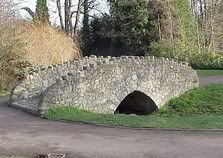Ok... you take a river to the sea by boat.
To get back up that river... do you row? Sail?
If the current is too strong, are you out of luck?
I know little of river travel, yet my saga is set on the Rhine. Anyone?
V
Ok... you take a river to the sea by boat.
To get back up that river... do you row? Sail?
If the current is too strong, are you out of luck?
I know little of river travel, yet my saga is set on the Rhine. Anyone?
V
And using pull animals on a path along the river. I don't know early its been in use or if it's been used at this time on the rivers of Rhine, but pull-animals is great way to move the boat upstream. And this mode of transporting goods is still better/easier than simply unloading to a cart - in terms of the places where you actually can go by boat, of course.
The Viings had boats whit both sails and oars, so where there was unfavorable steams there was used oars.
Agreed. Row or sail when possible.
Near my personal Covenant, the old Erie canal system still exists...they moved all the barges with mules...
Of course the sides were basically straight lines, and the shore was kept free of fauna...
How about poling against the bottom? Not really any good for fast rivers.
A horse pulling a barge is an extremely efficient form of transport. At a steady walking speed a horse can move approximately fifty times as much weight in a boat as it could with a cart on old fashioned roads, possibly a hundred times its own body weight. The load moves with minimal friction whilst the strength of the animal is linked directly to the load with little wasted energy and it was this efficiency equation that inspired the development of the canal system in the eighteenth century. It was also this same old-fashioned horsepower that kept it going profitably for a century and a half thereafter.
I'm pretty sure that this point wasn't lost on the medieval people either. Also the use of towing instead of sail or oars would also make room for more goods on the boat. Research has shown that straightening of rivers, to facilitate river transportation, has been happening quite early - the example I know is of a English bishop (IIRC) - so I guess that clearing the brush along majors rivers where possible would have been a sound effort - but to what degree it might actually have happended, I haven't been able to find out.
Anyway - I think the major point was to move goods down the river - especially the heavy goods! For example locating or making a stone quarry upstream from whatever planed large building project (workers being easier to relocate than blocks of stone)
And something completely different - since most of the few bridges where quite low cut - It must have been difficult for boats and barges to pass under them - which also made the bridges exellent psots for taking you toll - from the road as well as from the river..

Rowing always works but is labour intensive, you need lots of rowers for a cargo vessel
for shallow parts of the river you can punt - using a long pole which you stick in the mud and walk down the side of your boat while pushing the boat forwards.
for slow wide rivers you can usaully tack back and forth using sails, which means pulling to the side when the wind is not good enough
for fast rivers tow horses are the usual methods
for rapids (small cliffs, or steep slopes) portage is the only real option. Which is pulling the boat to the side, emptying it, transporting the goods up the slope and then putting the boat on rollers and dragging it.
I don't remember exacly but in "The Dragon and the Bear: the Novgorod Tribunal" there is something on travels by river.
[size=75]Non ricordo esattamente ma in "The Dragon and the Bear: the Novgorod Tribunal" c'è qualcosa sui viaggi per fiume[/size]
In AM5 it should read " which also made the bridges exellent spots for taking your TROLL...
![]()
lol !
.... or leaving it... ![]()